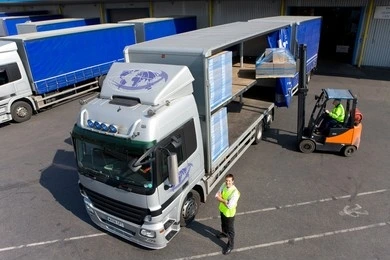When you think of Walmart, you likely picture the massive retail giant with its sprawling stores, endless product aisles, and countless customers. What you might not immediately envision is the intricate logistics system that keeps this retail running smoothly.
At the heart of Walmart’s logistics strategy lies a concept known as cross-docking. In this blog, we will look into why Walmart uses cross-docking and how you can do the same for your business.

What is Cross-Docking?
Before we dive into the specifics of why Walmart employs cross-docking, let’s first understand what Cross-Docking is.
Cross-docking is a logistics strategy that involves receiving goods at a distribution center and then immediately shipping them out to their final destinations without storing them in inventory. In essence, it’s a “dock-to-dock” process where products flow through the distribution center very briefly, if at all.
Here’s how cross-docking typically works:
Receiving: Products arrive at the distribution center from suppliers or manufacturers. These products are usually pre-sorted and labeled for quick identification.
Sorting and Processing: Upon arrival, the products are quickly sorted based on their intended destinations. This sorting process is crucial, as it ensures that the right products end up on the right trucks for immediate shipment.
Shipping: The sorted products are then loaded onto outbound trucks, often within a matter of hours or even minutes. These trucks transport the goods directly to stores or customers.
Now, let’s explore the reasons why Walmart, one of the world’s largest retailers, embraces cross-docking as a fundamental part of its supply chain strategy.
1. Speed and Efficiency
One of the primary reasons Walmart uses cross-docking is to maximize speed and efficiency in its supply chain. Traditional warehousing involves storing products for extended periods, which can result in delays, increased handling costs, and the risk of inventory becoming obsolete.
Cross-docking minimizes these issues by reducing the time products spend in the distribution center. This means products get to the stores faster, allowing Walmart to keep its shelves consistently stocked with the latest merchandise.
2. Reduced Inventory Holding Costs
Storing inventory can be costly. Warehousing requires space, labor, security, and climate control, all of which add to the overall cost of maintaining inventory. Cross-docking eliminates or significantly reduces the need for long-term storage, resulting in substantial cost savings for Walmart.
3. Freshness and Quality Assurance
In the retail industry, freshness is paramount, especially for products like groceries and perishables. Cross-docking allows Walmart to maintain a “just-in-time” inventory system, ensuring that fresh and seasonal items reach the shelves quickly. This approach helps reduce the chances of spoilage and ensures that customers receive high-quality, fresh products.
4. Minimized Handling
Every time a product is handled, there is a risk of damage or loss. Cross-docking minimizes the number of times a product is touched during the distribution process, reducing the likelihood of damage, improves overall product quality, and lowers handling costs.
5. Enhanced Supplier Collaboration
Cross-docking encourages strong relationships with suppliers. Suppliers are often responsible for pre-sorting and labeling products for quick identification, making it easier for Walmart to receive and process shipments efficiently. This collaborative approach fosters better communication and cooperation throughout the supply chain.
6. Environmental Benefits
By reducing the need for large, energy-intensive warehouses and minimizing the distances products travel within the distribution centers, cross-docking aligns with Walmart’s commitment to sustainability. The company can decrease its carbon footprint by adopting more efficient logistics practices.
7. Responding to Customer Demand
Walmart has made customer satisfaction a top priority, and cross-docking plays a vital role in meeting customer demands. With the ability to quickly respond to changing customer preferences and market trends, Walmart can ensure that the products customers want are readily available on store shelves.
8. Cost Savings
Ultimately, all these benefits of cross-docking contribute to significant cost savings for Walmart. By reducing inventory holding costs, minimizing handling, and increasing efficiency, Walmart can offer competitive prices to its customers while maintaining healthy profit margins.
How You Can Use Cross-Docking For Your Business
If you’re a business owner who wants to implement cross-docking, it’s important for you to:
- Assess product suitability
- Maintain strong supplier communication
- Invest in advanced logistics software
- Have a dedicated area in the distribution center for smooth operations
Alternatively, you can delegate all these tasks to quickly move your goods from one truck to another without storing them for too long. In order to pick a company that knows how to do this well, check if they have the right tools and place to do the job along with their experience and customer reviews.
Working with a good company can make your deliveries faster, save money, and get products to your customers quickly.
Conclusion
Walmart uses cross-docking to move goods quickly without storing them for long. This helps them save money, get products to stores faster, and keep items fresh. This strategy is a big reason why Walmart is so successful. Any business thinking about using this method should plan well, talk closely with their suppliers, and pick the right cross-docking partner to help. Doing this right can help a business save money and keep their customers happy.
At Mile High Delivery & Cold Storage, we help businesses with Cross-Docking in Denver, Colorado. Not sure if we’re the right fit? Contact us today and we’d love to talk about your needs and what we can do for you.

